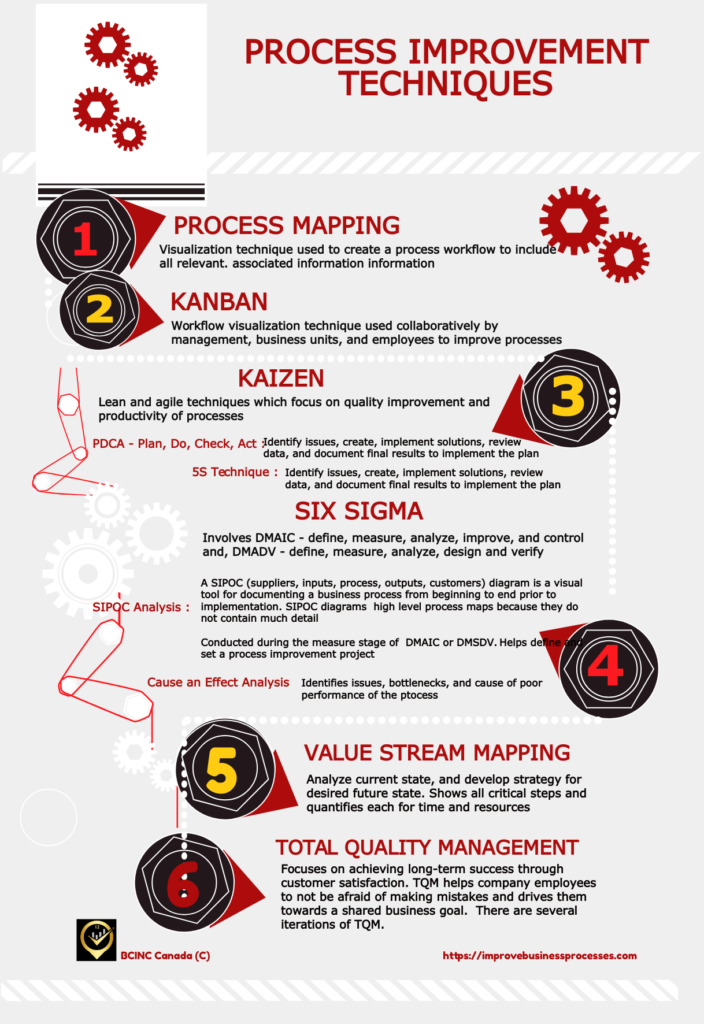Meeting the ever-changing customer needs in today’s fluid environment is why process improvement is important. As expected, there are several key benefits which are unknown to many businesses who tend to place process improvements at the bottom of their priority ladder.
A business process is a series of tasks that are conducted to create, market, and sell products and services to customers. Companies must adjust their strategies and processes and develop new ones that may be required in a timely manner.
Therefore, continuous process improvement, becomes a key part of business operations.
Why Process Improvement is Important – Benefits
Business process improvement involves analyzing, existing business processes to increase efficiency and improve the overall customer journey and experience.
Focus Areas for Improvement
- Low value tasks – Reduce or eliminate tasks with little to no return in revenue
- High value tasks – Top priority as they provide the most return in revenue
- Remove bottlenecks in process flow
- Points of contact for the customer – Reduce, eliminate, or add beneficial points of contact that will increase customer satisfaction
- Risk based data that cause inaccurate data or compliance issues
Major Benefits of Process Improvement – Why Process Improvement is Important
The major benefits are:
- Minimize or eliminate errors and rejects,
- Reduce waste,
- Improve productivity
- Streamline and optimize processes
- Improve efficiencies
- Regulatory compliance
- Improve product and service quality
- Reduce cycle/ delivery times
- Improve customer experience and satisfaction, and ultimately
- Increase profit margins

Common Types of Process Improvement
There are several common types of process improvement. Seven of these are listed below are:
Process Mapping
Modeling workflows, is a practice used to visually conduct an audit of the current state of a process or processes. It quickly identifies bottlenecks and potential areas for improvements.
Improving Communication
Process improvement helps to streamline communication in a company by decreasing the number of emails and contact touch points between workers and other business divisions.
Improving Process Efficiency – Why Process Improvement is Important
Inefficient businesses operate at a competitive disadvantage.
Efficiency quantifies the assets and materials (relative to full potential) used to deliver the product or service. Assets include money, people, equipment, information technology, inventory, and facilities.
An increase in efficiency results in higher output of goods and services relative to the assets used.
Reducing Cycle Time.
A business that can consistently deliver within a shorter timeframe will be sought by customers. Removing non-value-added tasks and time, can drastically reduce cycle times.
Cutting costs
Cost cutting process improvement focuses on reducing or removing unnecessary tasks and redundancies to allow resources to be efficiently reallocated, resulting in reduced costs.
Improving Customer Experience
This begins with aligning internal business processes to deliver better external customer outcomes.
Process Improvement Methods
These are methods used to identify and analyze issue(s) in a process, determine how to address them, and monitor the success or failure of the changes. There are also different measures of process effectiveness
Each process improvement method addresses a different need in the company (see Infographic) but fall under a few clear-cut tools summarized as:
- Process mapping
- Value Stream Mapping –
- Total Quality Management
- Kanban
- Kaizen – Lean and agile practices include PDCA and 5S
- Six Sigma – SIPOC, Cause and effect
6 Basic Rules to Conduct a Process Improvement Initiative
Implementing process improvement techniques is not a simple exercise, and it should form part of a business strategy just like regular internal audits.
While Business Process management software can provide considerable value to a large company, smaller businesses can conduct required process improvements with the right external specialist resources quickly and efficiently.
When a process audit shows that processes require improvement, there are 6 basic rules to follow:
- Review and define your goal for the current processes in an organization, their purpose and condition.
- Identify the root cause of the broken processes, any challenges, and opportunities, and how they can be improved to better align with the goals of the company.
- Generate solutions to determine how the improved processes can add value to operations.
- Measure data – Identify KPIs that will show whether the process improvement technique is effective or not.
- Identify Resources to be used for the process improvement and resource reorganization after optimization.
- Control, Monitor and Analyze the results and outcomes to ensure solutions are being continuously applied.
Conclusion
The derived value and benefits discussed answer the question of process why process improvement is important for every company that desires growth. Need Assistance?
References
Asana (2022) 7 types of Process Improvement Methodologies you Should Know About https://asana.com/resources/process-improvement-methodologies

